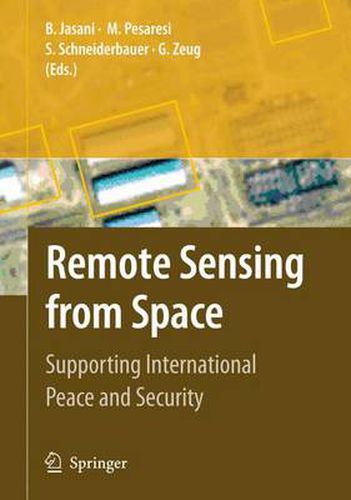Readings Newsletter
Become a Readings Member to make your shopping experience even easier.
Sign in or sign up for free!
You’re not far away from qualifying for FREE standard shipping within Australia
You’ve qualified for FREE standard shipping within Australia
The cart is loading…






This title is printed to order. This book may have been self-published. If so, we cannot guarantee the quality of the content. In the main most books will have gone through the editing process however some may not. We therefore suggest that you be aware of this before ordering this book. If in doubt check either the author or publisher’s details as we are unable to accept any returns unless they are faulty. Please contact us if you have any questions.
David Stevens Space-based information, which includes earth observation data, is increasingly becoming an integral part of our lives. We have been relying for decades on data obtained from meteorological satellites for updates on the weather and to monitor weather-related natural disasters such as hurricanes. We now count on our personal satellite-based navigation systems to guide us to the nearest Starbucks Coffee and use web-based applications such as Google Earth and Microsoft Virtual Earth to study the area of places we will or would like to visit. At the same time, satellite-based technologies have experienced impressive growth in recent years with an increase in the number of available sensors, an increase in spatial, temporal and spectral resolutions, an increase in the availability of radar satellites such as Terrasar-X and ALOS, and the launching of specific constellations such as the Disaster Monitoring Constellation (DMC), COSMO- SkyMed (COnstellation of small Satellites for the Mediterranean basin Observation) and RapidEye. Even more recent are the initiatives being set-up to ensure that space-based information is being accessed and used by decision makers, such as Sentinel Asia for the Asia and Pacific region and SERVIR for the Latin America and Caribbean region.
$9.00 standard shipping within Australia
FREE standard shipping within Australia for orders over $100.00
Express & International shipping calculated at checkout
This title is printed to order. This book may have been self-published. If so, we cannot guarantee the quality of the content. In the main most books will have gone through the editing process however some may not. We therefore suggest that you be aware of this before ordering this book. If in doubt check either the author or publisher’s details as we are unable to accept any returns unless they are faulty. Please contact us if you have any questions.
David Stevens Space-based information, which includes earth observation data, is increasingly becoming an integral part of our lives. We have been relying for decades on data obtained from meteorological satellites for updates on the weather and to monitor weather-related natural disasters such as hurricanes. We now count on our personal satellite-based navigation systems to guide us to the nearest Starbucks Coffee and use web-based applications such as Google Earth and Microsoft Virtual Earth to study the area of places we will or would like to visit. At the same time, satellite-based technologies have experienced impressive growth in recent years with an increase in the number of available sensors, an increase in spatial, temporal and spectral resolutions, an increase in the availability of radar satellites such as Terrasar-X and ALOS, and the launching of specific constellations such as the Disaster Monitoring Constellation (DMC), COSMO- SkyMed (COnstellation of small Satellites for the Mediterranean basin Observation) and RapidEye. Even more recent are the initiatives being set-up to ensure that space-based information is being accessed and used by decision makers, such as Sentinel Asia for the Asia and Pacific region and SERVIR for the Latin America and Caribbean region.